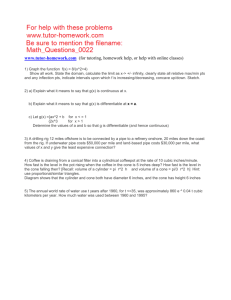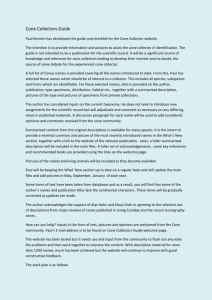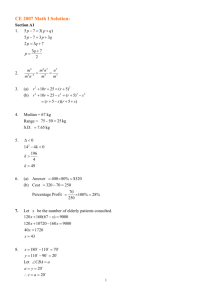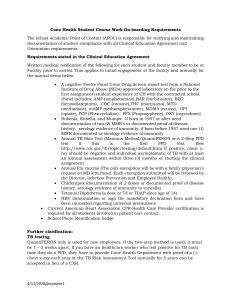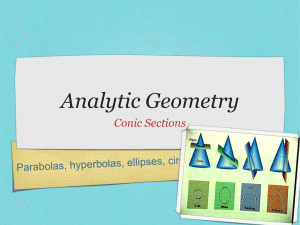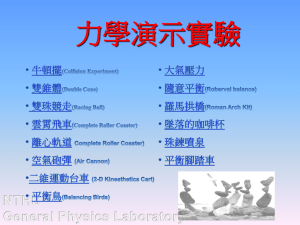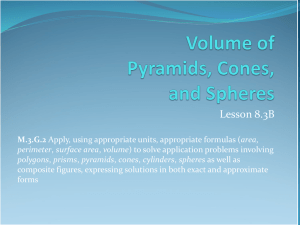Finding the volume of a cone
advertisement
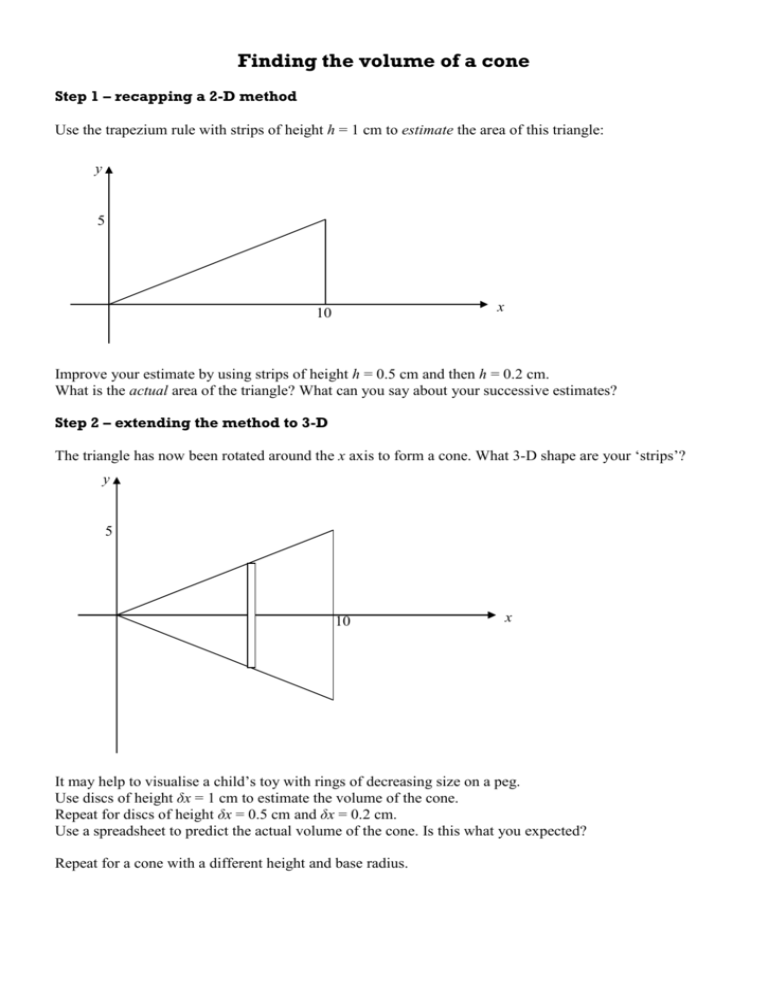
Finding the volume of a cone Step 1 – recapping a 2-D method Use the trapezium rule with strips of height h = 1 cm to estimate the area of this triangle: y 5 x 10 Improve your estimate by using strips of height h = 0.5 cm and then h = 0.2 cm. What is the actual area of the triangle? What can you say about your successive estimates? Step 2 – extending the method to 3-D The triangle has now been rotated around the x axis to form a cone. What 3-D shape are your ‘strips’? y 5 10 x It may help to visualise a child’s toy with rings of decreasing size on a peg. Use discs of height δx = 1 cm to estimate the volume of the cone. Repeat for discs of height δx = 0.5 cm and δx = 0.2 cm. Use a spreadsheet to predict the actual volume of the cone. Is this what you expected? Repeat for a cone with a different height and base radius. Step 3 – generalising y r x x + δx h x Find the volume of the disc which starts x units from the vertex and has height δx, and of the next disc. The actual volume of the slice δV is between these two volumes. Write a double inequality to show this. Divide through by δx. What happens as δx tends towards 0? Finding the volume of a cone - Teacher’s Notes Students should already be familiar with the formula for the volume of a cone, but will have little idea where it comes from. This makes discovering and proving the result for themselves a high point for them. The temptation is to demonstrate the formal method for volumes of revolution on a simple graph and then prove the cone formula as an exercise, but the lesson and the result will be more memorable if it is used to introduce the concept. (I can testify to this, remembering this lesson clearly from my own A level – thanks to Laurinda Brown x years ago, where x » 10). Allow them to work together with as little intervention as possible until the very end, where they will no h dV r 2 x 2 r 2 x2 doubt need some assistance in getting to and thence to V h 2 dx dx h2 0 The inequality should be: r 2 x 2 h2 x V r 2 ( x x) 2 h2 x Dividing through by δx: r 2 x 2 h2 V r 2 ( x x) 2 x h2 As δx tends to 0, the right hand expression converges to the left hand expression, the ‘sandwich theorem’, V dV x dx , and by dV tends to the left hand expression as well. dx Now integrate to find V. We chose to refer to the ‘height’ of both the strips in the trapezium rule and of the cylinders in the volume. This was for consistency, and so that we could move seamlessly from the familiar ‘h’ in the trapezium rule to δx in the volume of revolution (noting that we can’t use h here since it will be used for the height of the general cone later). The h in the trapezium rule comes from the height of the trapezium in the usual formula, and the formula for a cylinder usually has h where δx is used here. So although it seems odd to start with, it makes it easier to use the standard notation later.

